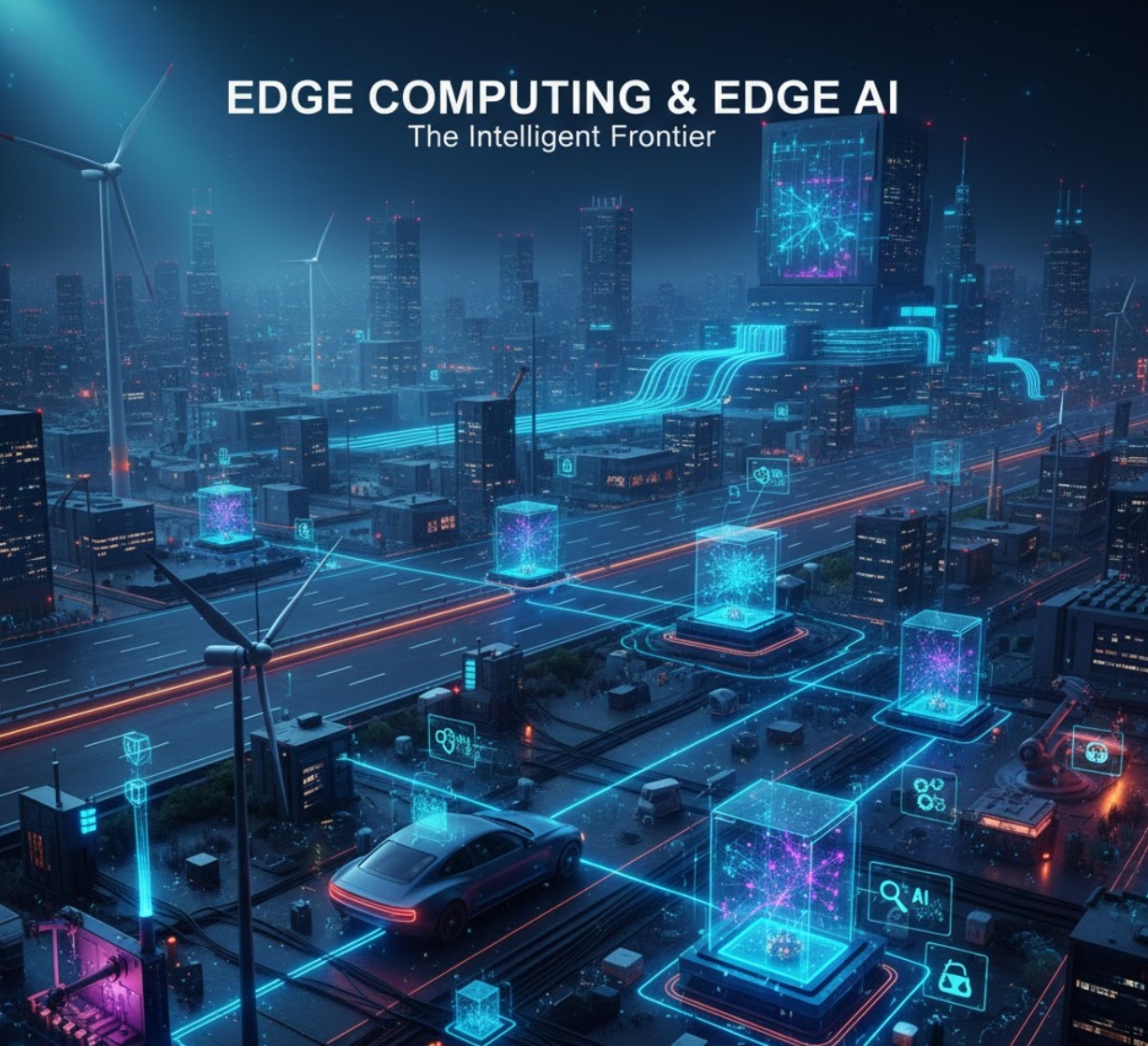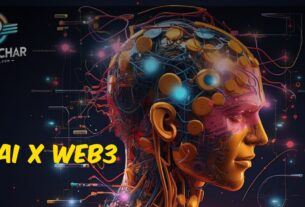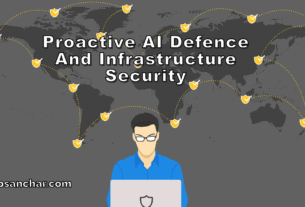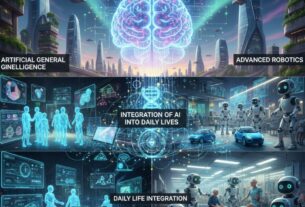The digital revolution, initially centered on the power of the centralized cloud, is undergoing a profound spatial transformation. Data, once universally routed to distant mega-data centers, is now being processed right where it is created: at the network edge.
This fundamental shift is driven by the explosion of Internet of Things (IoT) devices, the rollout of 5G, and the demand for real-time, autonomous decision-making. At the core of this transformation is Edge Computing, a distributed IT architecture, and its powerful partner, Edge AI, which embeds machine learning models directly into devices.
Edge Computing: Beyond the Central Cloud
Edge computing is a distributed computing paradigm that brings computation and data storage closer to the physical location where the data is generated. The “edge” can refer to a multitude of locations outside a centralized data center, including factory floors, retail stores, remote oil rigs, and most importantly, the end-user devices themselves (e.g., smartphones, smart cameras, sensors).
Why the Shift to the Edge?
The necessity of edge computing arises from the inherent limitations of a cloud-only model in a world dominated by IoT:
- Ultra-Low Latency: Applications like autonomous vehicles, remote surgery, or industrial automation require millisecond-level response times. The round-trip delay of sending data to a distant cloud and waiting for a response is unacceptable and potentially dangerous. Edge processing eliminates this bottleneck.
- Bandwidth Optimization and Cost: With billions of IoT devices generating massive amounts of data (IDC projects global data to reach 175 zettabytes by 2025), transmitting all of it to the cloud is prohibitively expensive in terms of bandwidth and storage. Edge devices process and filter raw data locally, sending only aggregated or critical insights back to the cloud.
- Improved Reliability and Offline Operation: In areas with intermittent or poor connectivity, such as remote industrial sites or moving vehicles, a reliance on the cloud can cause service disruptions. Edge systems can operate autonomously, ensuring continuous, reliable functionality.
- Data Sovereignty and Privacy: Processing sensitive personal or proprietary data locally helps organizations comply with strict data sovereignty regulations (like GDPR) and enhances security by minimizing the transfer of raw, sensitive information over the public internet.
Edge AI: The Intelligence Factor
While edge computing provides the infrastructure, Edge AI provides the intelligence. Edge AI is the deployment of Artificial Intelligence (AI) and Machine Learning (ML) models directly onto edge devices, gateways, or local servers, enabling them to perform tasks like inference, prediction, and classification without constant communication with a central cloud.
The Mechanism of Edge AI
The process typically involves:
- Cloud-Side Training: Large, complex ML models are still trained on the massive compute and data resources of the central cloud.
- Edge-Side Inference: The trained models are then optimized and deployed to the resource-constrained edge devices, where they perform inference (making predictions or classifications) in real time. This requires specialized hardware, often referred to as AI chips or accelerators, designed for high-efficiency processing with low power consumption.
The convergence of AI with the distributed architecture of edge computing creates transformative opportunities.
The Power Triangle: Edge, 5G, and IoT
The full potential of edge computing and Edge AI is unlocked through their synergy with two other mega-trends: IoT and 5G.
- IoT as the Data Generator: IoT devices (sensors, cameras, wearables) are the source of the data. Their massive numbers and geographically dispersed nature create the very problem—the data overload—that edge computing is designed to solve.
- 5G as the Accelerator: 5G networks provide the essential low-latency, high-bandwidth communication needed to connect the myriad of edge devices and local edge servers. While edge computing handles the real-time processing, 5G ensures the swift, reliable connection between the device and its nearest edge node, or when required, the central cloud. This combination is key to enabling demanding applications like Mobile Edge Computing (MEC).
Industry-Shaping Use Cases
Edge computing and Edge AI are not abstract concepts; they are actively reshaping multiple industries:
The Hybrid Future: Cloud vs. Edge
The narrative around edge computing is often framed as a conflict with the cloud, but the reality is one of complementary architecture. The future is a hybrid, multi-layered environment where workloads are intelligently distributed based on need.
The cloud will remain the backbone for large-scale data storage and complex AI model development, but the edge will become the primary execution environment for real-time operations and interactions.
Challenges on the Edge
Despite its immense promise, the widespread adoption of edge computing faces significant challenges:
- Deployment and Management Complexity: Deploying and managing a vast network of geographically dispersed, heterogeneous edge devices is exponentially more complex than managing a centralized data center.
- Security Vulnerabilities: Each edge device is a new attack surface. Securing thousands of distributed endpoints that often have limited processing resources for security software is a major undertaking.
- Hardware and Standards: Edge devices have constrained power, memory, and compute resources. Developing optimized AI models (often called TinyML) and a standardized framework for the diverse hardware remains a work in progress.
- Data Synchronization: Maintaining data consistency between the processing done at the edge and the long-term storage in the cloud presents complex data management and synchronization challenges.
In conclusion, Edge Computing and Edge AI represent a defining moment in the evolution of digital infrastructure. They are the essential tools for translating the potential of the IoT and 5G into tangible, real-world services. By moving intelligence closer to the point of action, they are not just optimizing networks; they are creating a new era of autonomous, responsive, and highly efficient digital ecosystems. The future of computing is, quite literally, on the edge.



